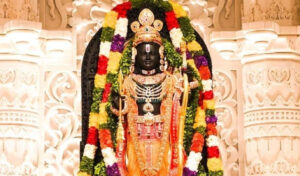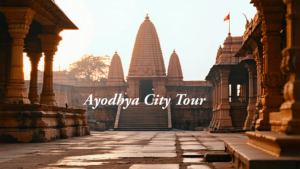Sri Ram Janmbhoomi, Ayodhya – Where Divinity & History Meet
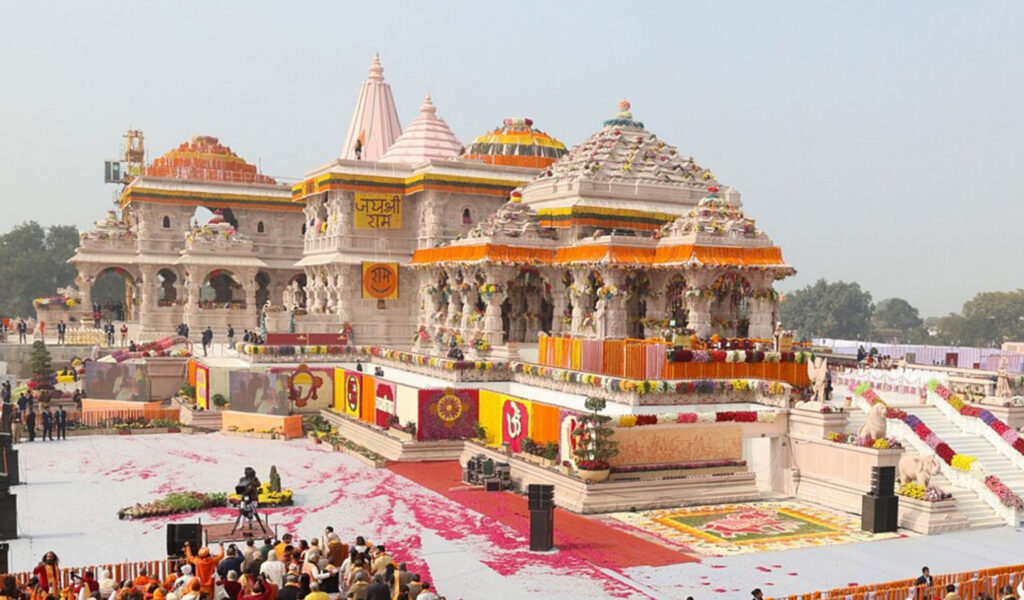
Sri Ram Janmbhoomi is arguably the most cherished among Ayodhya sightseeing places — the site believed to be the birthplace of Lord Rama. For pilgrims, history lovers, and travellers, this is a sacred Ayodhya tourist spot that brings together devotion, mythology, architectural majesty, and modern resurgence. If you’re mapping out your Ayodhya tourist attractions, Sri Ram Janmbhoomi is not just a landmark—it’s an experience of faith, culture, and living tradition.
Where Is Sri Ram Janmbhoomi? (with GPS Coordinates)
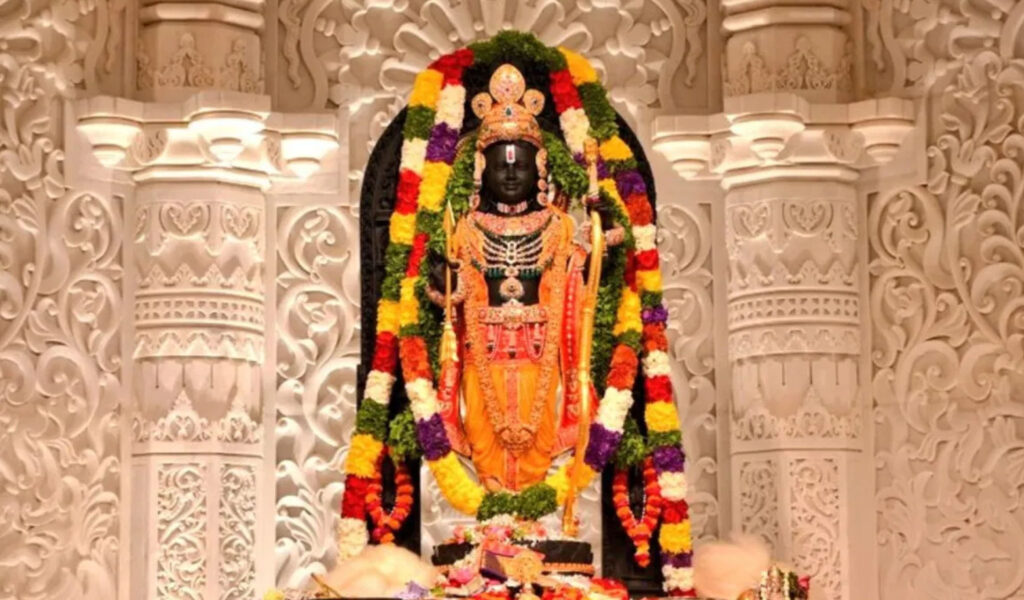
The Sri Ram Janmbhoomi Mandir is located right in the heart of Ayodhya city, Uttar Pradesh, in the Sai Nagar / Kanak Bhawan Road area. Positioned along the sacred banks of the Sarayu River, the temple stands at what devotees consider the exact birthplace of Lord Rama, making it one of the most spiritually significant Ayodhya tourist attractions.
•Latitude: 26.79564° N
•Longitude: 82.194576° E
These GPS coordinates can be entered directly into Google Maps for accurate navigation.
The temple’s accessibility is one of its key advantages for visitors:
•From Ayodhya Junction Railway Station, Sri Ram Janmbhoomi is only about 1 km, easily reachable on foot or by auto-rickshaw.
•From Bhagwan Valmiki International Airport, the temple lies around 11–12 km, a short 20–25 minute drive.
Because it sits in the city centre, the site is surrounded by other major Ayodhya sightseeing places like Hanuman Garhi, Kanak Bhawan, and Dasharath Mahal, making it effortless to include in any pilgrimage or travel plan. Its central location also means devotees can combine darshan at the Ram Mandir with an exploration of Ayodhya’s vibrant markets, nearby ghats, and cultural circuits, all in one itinerary.
Mythological & Historical Significance of Sri Ram Janmbhoomi
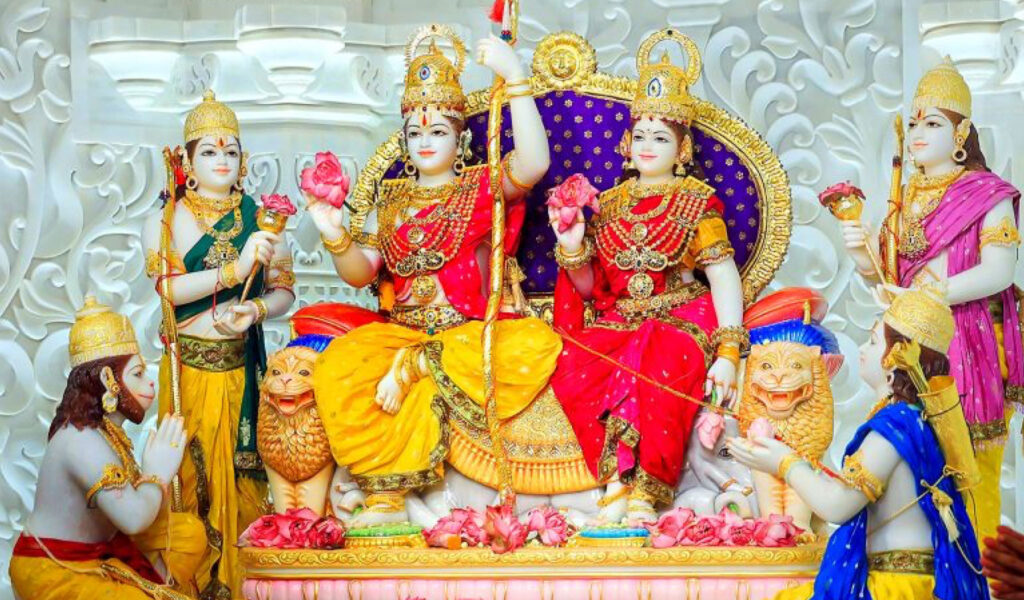
The Sri Ram Janmbhoomi Mandir holds a unique place among Ayodhya tourist attractions, blending deep mythology with living faith.
1. Birthplace of Lord Rama
Hindu tradition reveres this site as the exact birthplace of Lord Rama, the seventh avatar of Lord Vishnu. The Ramayana epic narrates that Ayodhya was Rama’s capital, and this sacred spot—Ram Janmbhoomi—is believed to be where his divine life began. For countless devotees, it is not just a location but a spiritual anchor, making it one of the most cherished Ayodhya places to see.
2. Modern Temple Construction
After years of anticipation, the Shri Ram Janmbhoomi Teerth Kshetra Trust was established in 2020 to oversee the construction of a grand temple. Built in traditional Nagara-style architecture, the temple features ornate mandapas (pavilions), gateways, and tall shikharas (spires). On 22 January 2024, the idol of Ram Lalla (infant Lord Rama) was ceremoniously consecrated in the sanctum, marking a historic spiritual milestone.
Today, Sri Ram Janmbhoomi is more than a tourist spot in Ayodhya—it is a living symbol of devotion and heritage, drawing millions of visitors each year.
Architecture of Sri Ram Janmbhoomi Mandir
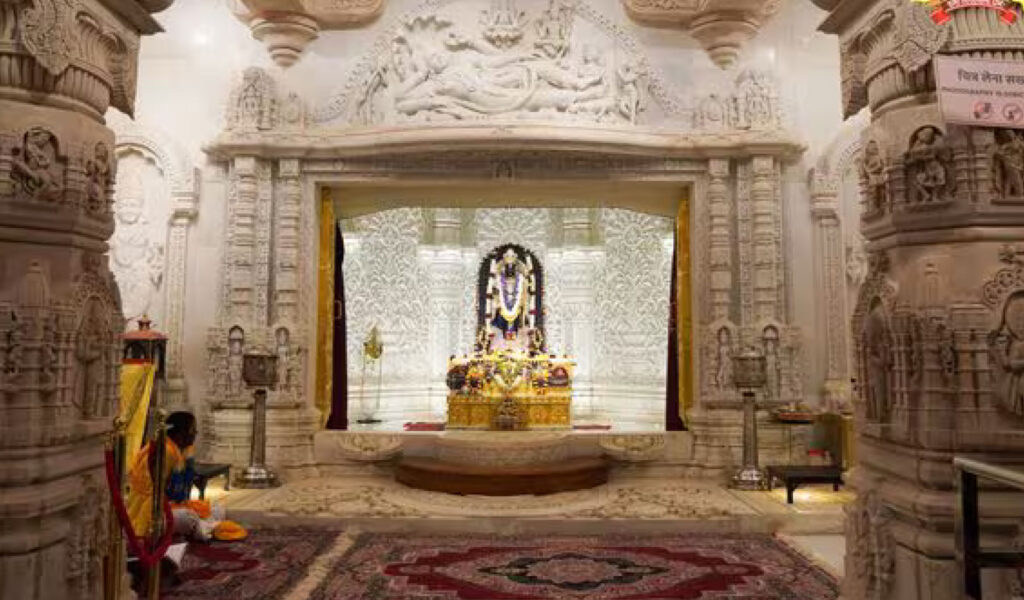
The Sri Ram Janmbhoomi Mandir is designed in the Nagara style of Hindu temple architecture, a style widely seen in North India. The temple embodies grandeur, devotion, and traditional craftsmanship, making it not only a place of worship but also one of the most stunning Ayodhya tourist attractions.
•Temple Layout: The entire structure is built on a raised platform, symbolising the cosmic mountain Meru, considered the axis of the universe in Hindu tradition. The temple spans an area of about 2.7 acres within the larger 70-acre complex.
•Shikharas (Spires): The temple has five domed shikharas (towers) — representing different divine energies — crowned by a majestic central shikhara above the sanctum (garbhagriha). These shikharas are intricately carved and visible from afar, giving the temple its iconic silhouette.
•Mandapas (Halls): Several beautifully carved mandapas (pillared halls) lead to the sanctum. Each hall has symbolic themes, including the Kirtan Mandap (for devotional singing), Nritya Mandap (for dance), and Sabha Mandap (for gatherings).
•Garbhagriha (Sanctum): The innermost chamber houses the idol of Ram Lalla (infant Lord Rama), consecrated on 22 January 2024. The sanctum is crafted to allow natural sunlight to illuminate the idol during special times like Ram Navami, especially during the Surya Tilak ritual.
•Materials Used: The temple is constructed primarily using Rajasthani pink sandstone without the use of iron or steel. This not only ensures longevity but also reflects India’s age-old temple construction traditions.
•Dimensions: The temple is around 161 feet tall, 235 feet wide, and 360 feet long, making it one of the largest Hindu temples built in modern times.
•Art & Detailing: The intricate carvings on the walls and pillars depict stories from the Ramayana, scenes from Lord Rama’s life, and motifs symbolising dharma and divinity. Skilled artisans from across India have contributed to its creation.
The architecture of Sri Ram Janmbhoomi is not just about scale but about symbolism—it represents the victory of dharma, the continuity of tradition, and the beauty of India’s ancient craftsmanship, making it an unmissable place to visit in Ayodhya.
What You’ll See & Do at Sri Ram Janmbhoomi
Visiting Sri Ram Janmbhoomi offers both spiritual depth and sensory experience among Ayodhya tourist spot options.
•Grand Main Temple (Ram Mandir): The new temple is vast, architecturally impressive, featuring Nagara style architecture. It has multiple gates, mandapas (congregation halls), and intricate design work.
•Ram Darbar: The temple complex includes a Darbar hall where Ram Lalla (infant form of Lord Rama) is worshipped, along with Sita, Lakshmana, Bharat, Shatrughna, and Hanuman icons. This Darbar was opened to devotees recently.
•Surya Tilak Ritual: An interesting modern feature is the “Surya Tilak” ritual, where sunlight is directed onto the forehead of Ram Lalla on Ram Navami, combining ancient faith with modern scientific optics.
•Museum / Artefacts & Exhibits: Many area exhibits, landscaped surroundings, and memorials reflect the history of the Ram Janmabhoomi movement—from the Babri Masjid era, the archaeological evidence, to modern temple construction.
•Devotional Rituals & Aartis: Visitors can participate in morning and evening aarti, darshan, chanting, and special prayers on festivals such as Ram Navami, Diwali. Also special temple timings & passes for darshan are in place.
How to Reach Sri Ram Janmbhoomi
Being a central tourist spot in Ayodhya, getting to Ram Janmbhoomi is fairly straightforward:
•By Rail: Ayodhya Junction Railway Station is about 1 km away. Visitors can walk, take auto-rickshaw or electric rickshaw.
•By Air: Bhagwan Valmiki International Airport, Ayodhya, is the closest airport (~11.5 km). From there, cabs or taxis can take you directly.
•By Road: Ayodhya is well connected by road to major nearby cities like Lucknow, Prayagraj, Varanasi. Regular buses and private cars are frequent. Once in Ayodhya, signboards and local transport lead to Ram Janmabhoomi.
•Nearby Landmarks: The temple is located in Sai Nagar / Kanak Bhawan Road area. Well-known landmarks like Kanak Bhawan are very close. Many pilgrims combine visits with other nearby Ayodhya places to see.
Nearby Places to Visit
While you visit Sri Ram Janmbhoomi, these nearby Ayodhya sightseeing places are worthy additions:
•Kanak Bhawan: A beautiful temple dedicated to Lord Rama and Sita; known for its ornate gold and mirror work.
•Hanuman Garhi: Hilltop temple offering panoramic views of Ayodhya and a strong devotional vibe.
•Ram Ki Paidi (Saryu River Ghats): For bathing in the river, sunset views, and evening aarti.
•Gupt Hari Ghat: Hidden Ghat with spiritual calm away from busy crowds.
•Surya Kund: Sacred pond connected with rituals and quiet reflection.
Best Time to Visit & Travel Tips
•Ideal Season: October through March, when weather tends to be cooler and more comfortable. Summers (April-June) are hot; monsoon can make rivers swollen and temples crowded.
•Best Times of Day: Early mornings offer peaceful darshan; evenings are beautiful for aarti and temple lighting. Also less crowded.
•Things to Carry: Modest clothing, water, sun protection, comfortable footwear. If visiting during festivals, plan for larger crowds and maybe prebook passes.
•Tickets / Passes: For popular darshans, sometimes passes or timed slots are required; check latest info from Shri Ram Janmbhoomi Teerth Kshetra trust.
•Etiquette: Remove shoes, follow dress code, respect rituals. Photography may be allowed in some areas, restricted in sanctum.
Suggested Itinerary
Here’s how you can include Sri Ram Janmbhoomi in a full Ayodhya itinerary:
Half-day visit:
•Morning: Start with Sri Ram Janmbhoomi to catch the early calm and darshan
•Mid-morning: Visit Kanak Bhawan and Hanuman Garhi
•Lunch in Ayodhya city centre, then visit Saryu Ghats for riverside walk and evening aarti
Full-day itinerary:
•Early morning: Darshan at Sri Ram Janmbhoomi + visit Ram Darbar
•Midday: Explore nearby temples (Hanuman Garhi, Kanak Bhawan)
•Afternoon: Quiet time at Surya Kund or Gupt Hari Ghat
•Evening: Ram Ki Paidi (Saryu River), aarti and sunset
•Night: Cultural immersion (local food, market around Chowk)
FAQs – Sri Ram Janmbhoomi, Ayodhya
1.What is the significance of Sri Ram Janmbhoomi?
It’s believed to be the birthplace of Lord Rama, a central figure of the Ramayana. For Hindus, it’s one of the most sacred sites—representing faith, tradition, and culture. Its significance is both mythological and emotional.
2.Is there archaeological evidence supporting the Ram Janmbhoomi belief?
Excavations (e.g. by the ASI in the 1970s) found pillars, terracotta artefacts, and remains beneath the Babri Masjid structure, suggesting earlier non-Islamic structures existed.
3.When was the Ram Mandir inauguration / consecration ceremony held?
The idol of Ram Lalla was consecrated in a grand ceremony on 22 January 2024 as part of the construction and restoration of the temple.
4.Who manages the construction & operations of the Ram Mandir?
The Shri Ram Janmbhoomi Teerth Kshetra Trust was formed in February 2020 to oversee the construction and management of Ram Mandir.
5.What is the architectural style of the temple?
The temple is built in the Nagara style of Hindu temple architecture. It has features such as carved pillars, mandaps, multiple gates, tall shikharas/spires, etc.
6.What are the dimensions / size of Ram Mandir?
Key figures mentioned: the temple has a height of 161 feet, is about 380 feet long (east-west), and about 250-235 feet wide, with built-up area around 57,400 sq ft.
7.Are there darshan / visiting timings and passes required?
The temple is open for devotees. There are scheduled darshan times (morning and evening). For special events, aartis, or inauguration ceremonies, passes might be needed.
8.Is there any cost or entry fee for visiting Ram Mandir?
General entry is free. Any passes required for special aartis are issued free of cost.
9.Why was 22 January 2024 chosen for the consecration date?
The date was chosen based on astrological considerations, rituals, and readiness of the temple construction. It marked the grand consecration (Prana Pratishtha) of Ram Lalla.
10.What should visitors know before visiting Ram Mandir?
Visitors should dress modestly, expect security checks, abide by temple rules (e.g. certain items not allowed inside). Early morning is often less crowded.
11.What are some nearby places to visit along with Sri Ram Janmbhoomi?
Some famous ones include Hanuman Garhi, Kanak Bhawan, Saryu River Ghats (Ram Ki Paidi), among others.
Conclusion
Sri Ram Janmbhoomi is the most powerful Ayodhya place to visit, tying together myth, archaeology, devotion, and modern craftsmanship. For anyone charting Ayodhya places to see, this temple is more than just a structure—it is a destination of the heart. Whether you come for faith, history, or sheer awe, your visit here will resonate long after you leave.
Enroll in our Heritage Course to explore Sri Ram Janmbhoomi
and
Ayodhya’s sacred sites virtually!
Recommended Tour
Related Blogs
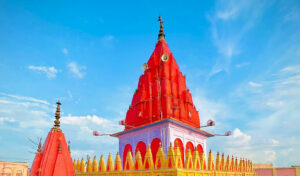
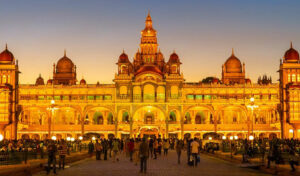
Indian History Learning Online: A Smarter, More Fun Way to Discover India’s Past
